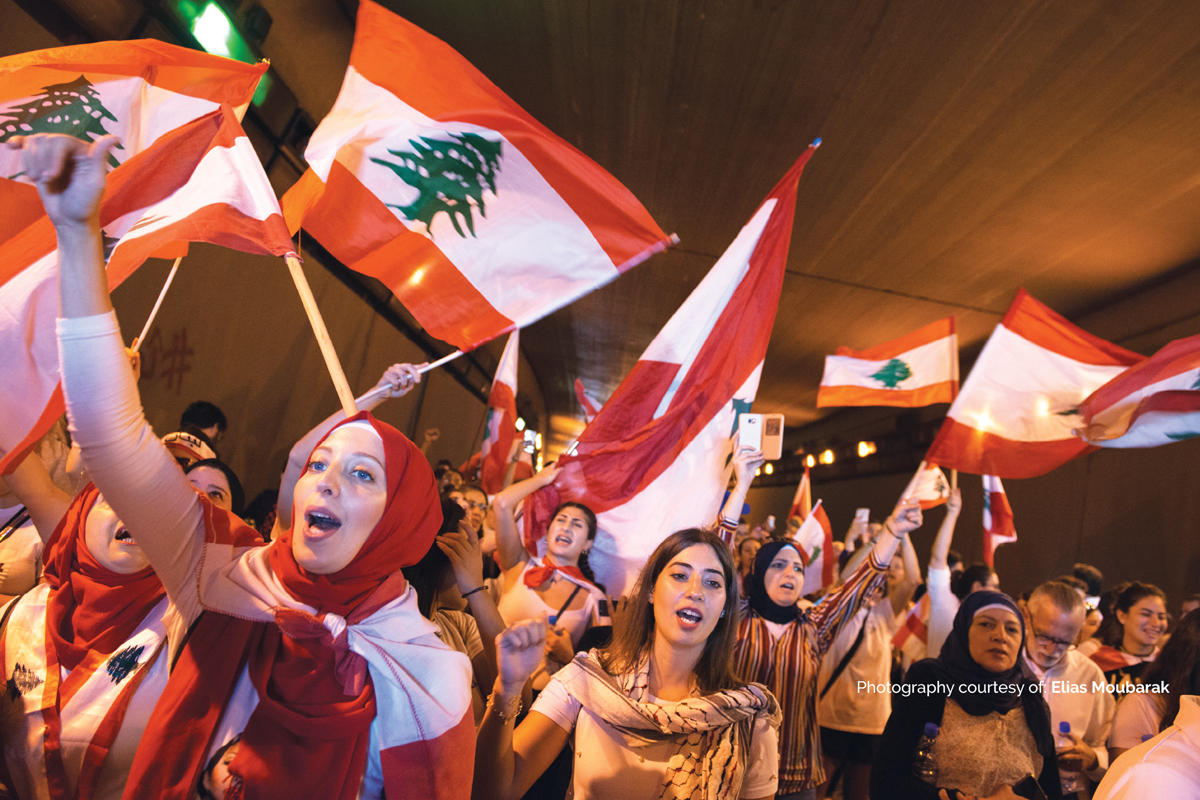A Year On: An Academic Perspective of the October 17 Uprising – Part II
In the second of our three-part series, LAU’s Dr. Sami Baroudi and Dr. Claudia Kozman weigh in on the momentum of the uprising and media uses respectively.
Whatever hope for change the October 17 uprising may have inspired was shaken in 2020 by unforeseen crises and tragedies in Lebanon, from the COVID-19 pandemic to the horrendous August 4 explosion in the port of Beirut.
One year on, are the Lebanese people still holding out hope for reform or have these events taken the wind out of their sails? And are they united in their outlook on the revolution or do their uses of the media reveal otherwise?
Here, Dr. Sami Baroudi and Dr. Claudia Kozman of LAU’s School of Arts and Sciences re-examine the October 17 uprising in light of their analysis in the special supplement to our LAU Magazine & Alumni Bulletin.
Dr. Sami Baroudi, Professor of Political Science and International Affairs
One year into the October 17 uprising and Lebanon finds itself in the middle of a perfect storm. On top of a stagnant economy, business closures, massive job layoffs, and a fast depreciation in the value of the Lebanese pound, the country was afflicted in 2020 with the COVID-19 pandemic and the August 4 Beirut explosion.
The harsh economic and health situation has diminished the saliency of political issues, including the twin demands of fighting rampant corruption and the building of a secular and civil state. There is a growing feeling that the “October Revolution” has lost its momentum as it has failed to dislodge the inept and corrupt political elite that continues to hold on to power despite its internal squabbles, diminished authority and dwindling resources.
The only glimpse of hope is the “audacity of hope” – to use a term coined by former US President Barack Obama – of the Lebanese people. Our people, especially the youth, are determined to keep up the fight for an inclusive and non-sectarian state even if, under duress, they have had to suspend this fight in order to attend to more pressing matters, such as surviving.
The many Lebanese who were pushed to emigrate will not forgive the politicians who drove them out. They, and the ones who stayed, will continue to clamor for a reformed Lebanese polity where officials serve the people and not their narrow interests, or their pockets. In our globalized world, physical distance does not impact much the flow of ideas. Lebanon is only a tweet away irrespective of what country you landed in.
Reforming the electoral system remains the gateway to the gradual elimination of sectarianism. At the present time, the fight for electoral reform does not figure high on most people’s agendas. This will inevitably change once we get close to the next parliamentary elections, scheduled for 2022.
The start of the long uphill battle to eliminate sectarianism might have been delayed but the battle will be eventually waged.
Dr. Claudia Kozman, Assistant Professor of Multimedia Journalism
What we witnessed last year with regard to the role that citizens played in the dissemination of information during the uprising has been corroborated by the study Dr. Jad Melki and I conducted in Lebanon.
The survey of a nationally representative sample of 1,000 Lebanese citizens revealed that people engaged in selection bias in exposing themselves to the news, avoiding others, and sharing news on social media. Supporters of the protests consumed television news that aligned with their attitudes toward the protests, whereas those who opposed the protests were more likely to consume anti-protest news.
More so, we found evidence for selective avoidance. This means that people were not only selective in their choice of news to watch, but also avoided those who did not share their attitudes by either unfriending/unfollowing, hiding/deleting a post or a comment, or blocking/reporting such posts.
Our data also revealed that supporters of the protests were more likely than others to share protest news on the four social media networks we asked them about: Facebook, WhatsApp, Instagram, and Twitter. Interestingly, we found a relationship between strong attitudes toward the protests, selective sharing and selective avoidance, suggesting that people who supported the protests were more likely than others to share pro-protests news on social media, while avoiding news that opposed their beliefs.
Taken together, these findings indicate that protest supporters played a significant civic role, both online and offline. Their strong support of the protests was linked to a higher likelihood of participation in the protests (offline civic engagement), while their online activities of selective sharing and avoidance meant that they created filter bubbles that magnified the frequency of pro-protest news through selective sharing.
More perspectives from our faculty will follow soon in the third and final part of the series.
